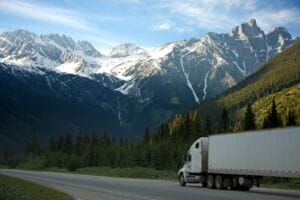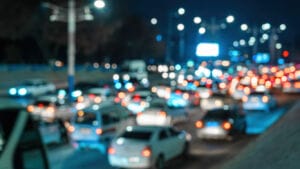In the past, Valley residents would drive their own personal vehicles on the very limited number of freeways available to them. Now, anyone can get anywhere quickly with the enhancements of freeways, bus systems, on-demand services, the light rail and much more.
The evolution of transportation in the PHX East Valley has helped drive the region. Over the past 10 years, bus systems have grown and the creation of the light rail system has connected Phoenix to the East Valley, allowing for more movement and growth.
The opening of the light rail, bike lanes and bus systems has also catered to different modes of transportation. According to Ram Pendyala, a professor at the School of Sustainable Engineering and the Built Environment at Arizona State University, different forms of transportation — such as public transit, biking, on-demand services and walking — has been greatly impacted by the younger generation.
When Mike Hutchinson, senior business advisor for East Valley Partnership, moved to Mesa 40 years ago, “the cities were all growing.” There was a need for more freeways and ways of transporting the mass amount of people moving into the Valley.
In 1985, the freeways were funded and expanded, allowing for large businesses to rise and build.
“When you look at the surface streets of the freeway, they bring connectivity,” says John Lewis, president and CEO of East Valley Partnership. “And connectivity brings business and the ability to interact with others and then to have workers.”
Transportation has improved drastically in the past 30 years in the Valley, but there are even more possibilities for the future.
What’s coming?
“In the east part of the East Valley where there is vacant land, there are plans of putting in major corridors of roadway that will also allow future residents and businesses to come into that area,” Lewis says.
With a growing population, transportation has to keep up in order to allow for more business and people to help the economy thrive.
The one issue facing all transportation plans is safety. The majority of fatal car accidents are from human error, according to Jack Sellers, former facilities manager for the General Motors Desert Proving Ground in Mesa who was appointed in 2014 by Gov. Jan Brewer to a six-year term on the Arizona State Transportation Board. Sellers says self-driving cars have been a hot topic for years and may be closer than we think. What impact will they have on safety?
“Self-driving vehicles and intelligent traffic management is going to make a huge difference in the way we handle traffic,” Sellers says. “We should be able to handle a lot more capacity on our road system with intelligent vehicles or intelligent traffic management systems.”
Not only are self-driven vehicles a possibility in the near future, but so are electric vehicles and alternative fuel vehicles. Pendyala believes that environmentally friendly cars will continue to make progress.
“The market adaptation of these vehicles will only increase as the price barrier as the cost to own and operate these vehicles continues to fall,” Pendyala says. “As the options available in the market expand. I think we are also seeing a greater, perhaps inclination, towards using alternative modes of transportation especially amongst the younger generation.”
Building on success
Even with new technologies, improvement of what is already in use will also develop and improve. According to Hutchinson, there will be more improvements to the freeways, investment in the bus system and expansion to the light rail corridors within the next 10 years.
A rail from Phoenix to Tucson has been in the process of planning, according to Laura Douglas, community relations project manager at the Arizona Department of Transportation.
“The rail study is part of the department’s Long-Range Transportation Plan, which outlines transportation options that could help meet the demands for future growth and travel throughout Arizona,” Douglas says.
Any further movement of a rail connecting Phoenix to Tucson would need funding and support from policymakers and the public.
With constant growth of businesses and families, transportation needs to grow with it, especially in the technology-driven future. Yet it is a hard sell to convince people to spend money to develop and improve transportation. The future could contain self-driving cars, smoother roads and even drones, but the only way to maintain the growth of the Valley is to support transportation.
“The thing that I think people overlook is that infrastructure is really a major component in our economy for moving commerce,” Sellers says.





